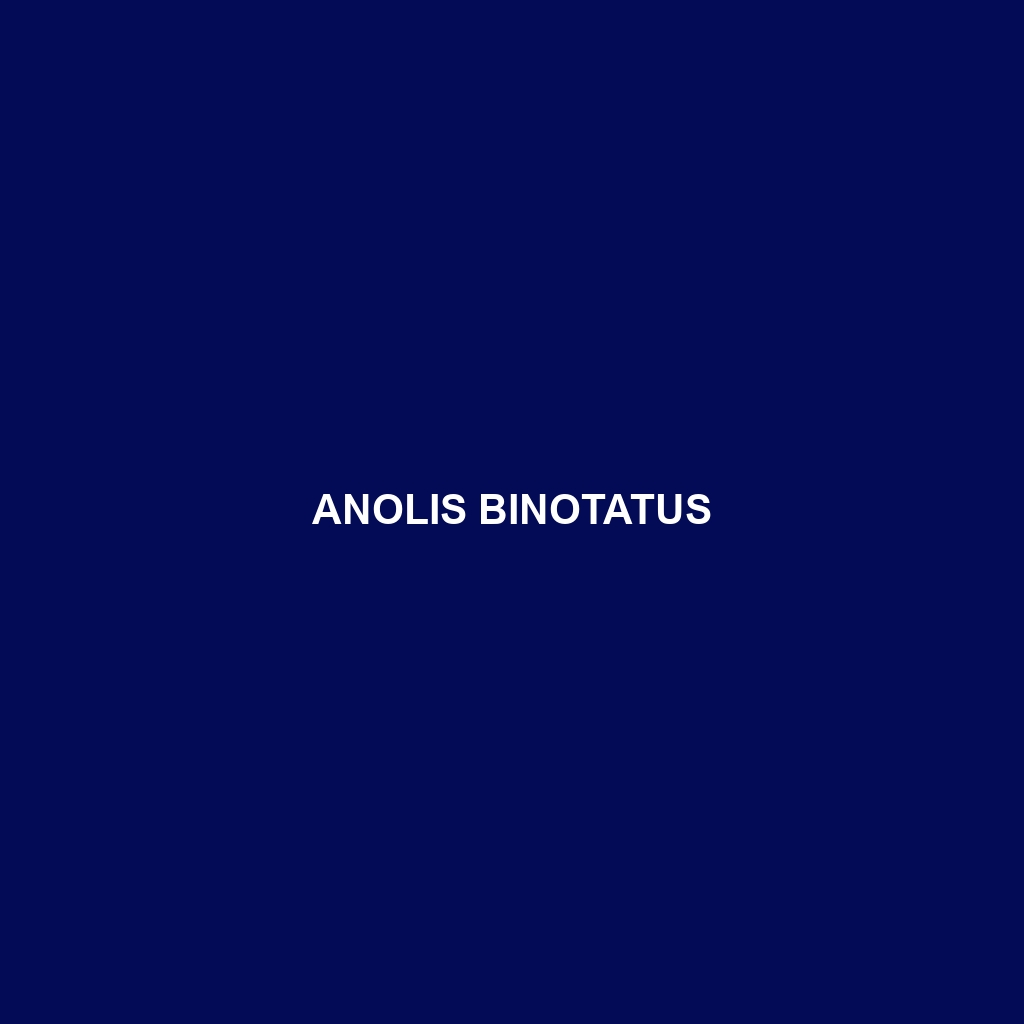Anolis binotatus: A Comprehensive Species Description
Common Name: Anolis binotatus
Scientific Name: Anolis binotatus
Habitat
Anolis binotatus primarily inhabits the lush rainforests and various tropical and subtropical regions of Central America, specifically found in countries such as Costa Rica and Panama. This species thrives in environments with ample vegetation, including tree trunks, shrubs, and leaf litter, where it can camouflage effectively. The humid climate and diverse flora of these regions create ideal conditions for Anolis binotatus to thrive.
Physical Characteristics
Anolis binotatus is a medium-sized lizard, measuring approximately 5 to 7 inches in length. Characteristically, this species exhibits a vibrant range of colors, including shades of green, brown, and gray, with distinctive markings that provide excellent camouflage among the foliage. The lizard’s elongated body and limbs, coupled with a dewlap that displays bright colors during courtship, are notable features that enhance its visual appeal. Additionally, its unique toe pads allow it to adhere to various surfaces effortlessly.
Behavior
Anolis binotatus is known for its territorial nature, with males often displaying aggressive behaviors to ward off rivals. During the day, these lizards are typically diurnal, basking in sunlight and actively foraging for food. Their vibrant display during mating rituals, which includes expanding their dewlap and performing head bobs, is a fascinating behavior that attracts attention from potential mates and serves as a warning to other males.
Diet
As an insectivorous species, Anolis binotatus primarily feeds on a diet of insects, including crickets, termites, and small beetles. They may also consume small invertebrates and arthropods, showcasing their opportunistic feeding habits. This varied diet not only supports their growth and survival but also helps maintain ecological balance by controlling insect populations within their habitat.
Reproduction
Anolis binotatus engages in an annual breeding season, typically occurring during the warmer months of the year. Females lay a clutch of eggs, usually between 3 to 6, within sheltered areas to protect them from predators. After a few weeks, the eggs hatch, yielding fully formed miniature lizards, which quickly disperse into their environment. This reproductive strategy ensures the survival and continuation of the species.
Conservation Status
Currently, Anolis binotatus is categorized as “Least Concern” according to the IUCN Red List. However, ongoing habitat loss and fragmentation due to deforestation and urbanization pose potential threats to its populations. Conservation efforts are essential to monitor and protect their habitats, ensuring their long-term survival.
Interesting Facts
Anolis binotatus possesses a remarkable ability to change its color depending on environmental conditions, which aids in both camouflage and social signaling. Additionally, this species exhibits a fascinating social structure, with dominant males establishing territories that can extend over several meters in radius.
Role in Ecosystem
As an integral part of the tropical ecosystem, Anolis binotatus plays a crucial role in controlling insect populations, thereby helping to maintain ecological balance. Furthermore, they serve as prey for larger predators, contributing to the region’s biodiversity. Their presence in the food web highlights the interdependence of species within their habitat.
